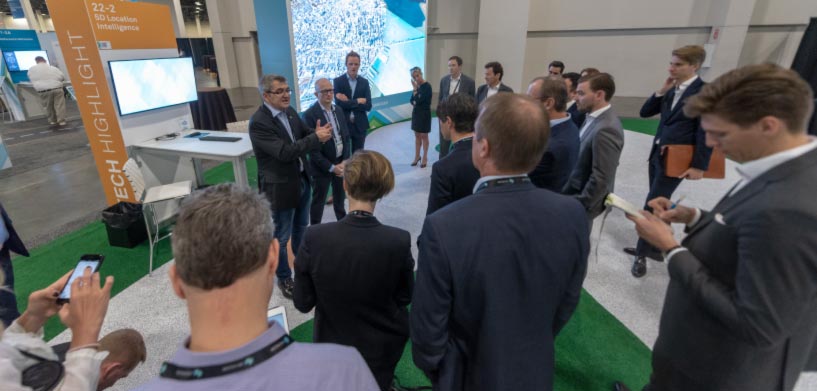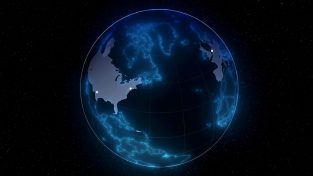For the latest installment of the Change Makers Blog Series, Marc Melviez with Hexagon’s Geospatial division discussed the wide-reaching impacts of sensor technology, software and the future of AI in the aviation industry.
The appearance of new ground-based sensors, GPS, radar and LIDAR have signaled an important evolution in aviation technology over the years. Early in aviation, there were only rudimentary maps available to assist in air travel. In those days, planes navigated by visual flight rules (VFR), essentially having to detect and avoid aircraft in the air and on the ground by eyesight. It was also incumbent on the aviation authorities and air traffic control (ATC) in various countries to make sure that planes didn’t collide. Unfortunately, this was sometimes more art than science, given technological limitations.
“There was a terrible aviation disaster in the Canary Islands in the 1970s that took place when two large planes collided on the runway, killing hundreds of people,” said Marc Melviez, chief strategy officer for Hexagon’s Geospatial division. “The crash was partially fog-related, but also the technology just wasn’t what it is today.”
These types of disasters are horrible, but they’ve also driven innovation in technology, Melviez noted. Today, new technologies such as Hexagon’s Luciad ATC Playback software allows for multi-sensory connectivity and precision positioning, wherein connected radar, LIDAR and GPS — with higher definition in real time — have become the standard in aviation navigation. This produces multiple technological sensors, or eyes, that assist in collision avoidance.
“In the Canary Islands, basically you only had the eyes of the pilots as the primary sensors,” said Melviez. “The whole point of using Luciad for aviation is to avoid these types of catastrophic collisions, fusing sensors themselves and information that produces different types of sensors.”
Unfortunately, even today, radar and GPS can be easily jammed or disturbed by storms, mountains and other features or situations.
“Pilots need extra equipment like inertial measurements, which are also very precise but have disadvantages too,” according to Melviez. “Luciad enhances aviation safety by fusing information from a host of different sensors, and depending on the context, always using the sensors that provide the best information available at that time. We do this to help the aviation industry achieve their goal of zero accidents.”
Beyond safety, Luciad also assists in flying efficiency, with the goal of minimal to zero delays. Other objectives including passenger comfort and turbulence avoidance are also very important so flights are more comfortable for everyone in the air. In order to do this, all the sensory assets of navigation, including radar, GPS, precision positioning and LIDAR, must be used as efficiently as possible.
Airspace is another area of concern that Luciad addresses. For example, radar has certain limitations, one being that it’s not always great in monitoring the distance between aircraft. In some cases, aircraft cannot be closer than 50 kilometres apart in the air. “When you employ more precision over all the available instruments like GPS, radar and LIDAR, we have more precise measurements and improved precision positioning,” Melviez explains.
Hexagon’s Luciad software is also having an impact on satellite imagery, as the industry changes from satellite imagery as something static to much more dynamic — displaying changes over time. “When you have one picture a year of a certain place, you can’t see that something has changed, like a building that was once there but is gone now,” Melviez said.
Looking toward the future of air travel, Melviez noted that AI applications are “currently limited and very specialised” in the industry right now. AI is saving people from doing mundane jobs in aviation at the moment, but functions of AI such as pilotless airplanes are “probably 10 to 15 years away.”
“As a pilot, I started flying in a very simple aircraft where you had to do everything yourself. But in more complex aircraft, I actually spend most of my time checking that the machine is doing what it is supposed to do versus piloting,” Melviez said. “For planes that are infinitely more complex, like very large passenger planes, the pilots are not flying so much as they are checking instruments. They are checking that the computer is flying the aircraft correctly and that there’s nothing unexpected.”
Initiatives like pilotless air taxis in Dubai are scheduled to be operational this year, but these are for single passengers or possibly a couple of passengers. Flying commercially in a pilotless plane will face adoption challenges, as passengers might not feel so comfortable initially. The transition will roll out slowly, though in some instances, airlines are already contemplating going from two pilots to a single pilot, then ultimately to a pilotless flight.
Regardless of what the future holds, sensors and positioning technology will continue to be forces for change in air and space navigation industry, making flights safer, more precise and more pleasurable for passengers.

















